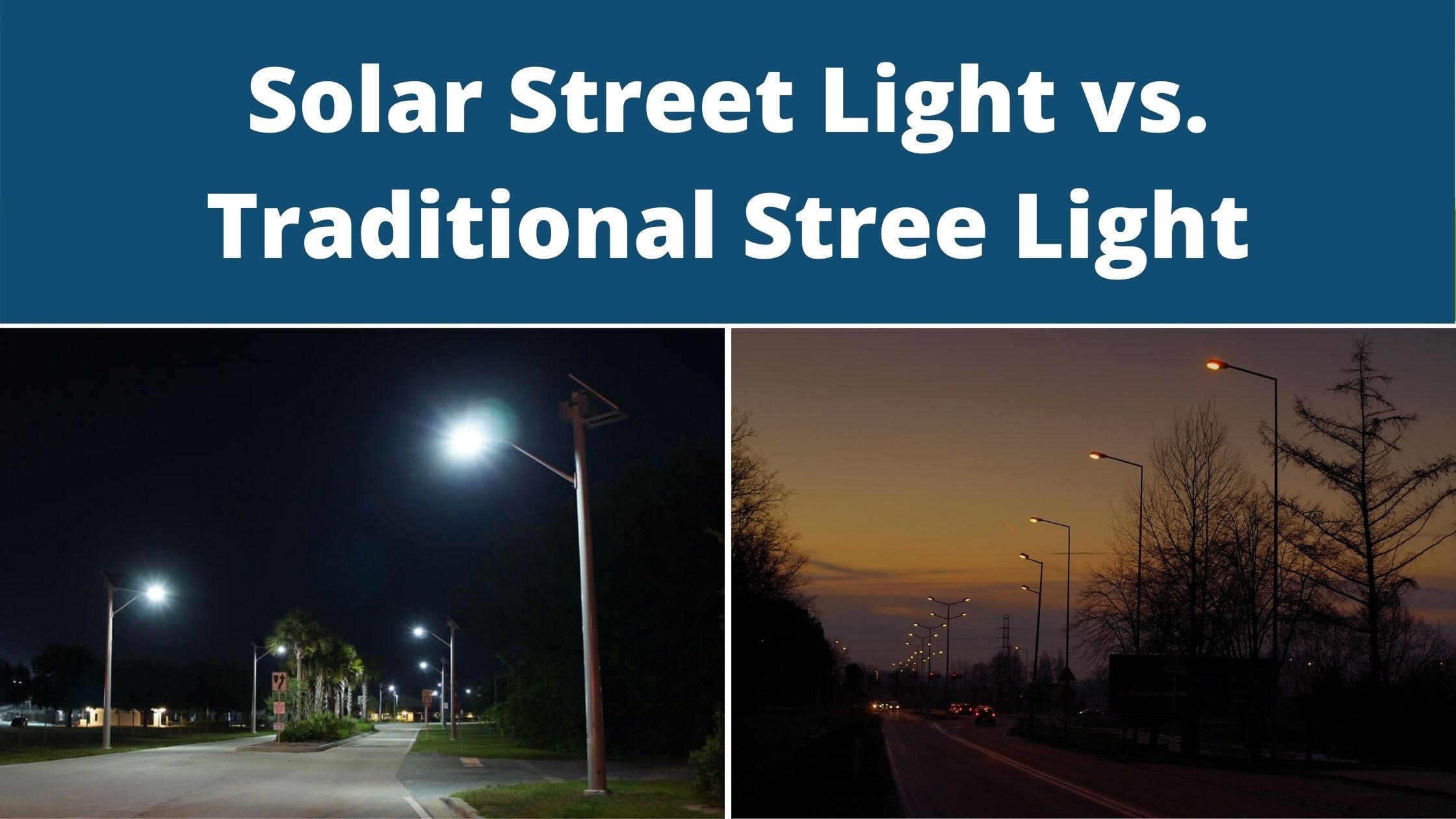More solar street lights are being installed worldwide and are slowly taking over as the way to illuminate the streets at night, but what are their differences? Why are solar street light systems being used now instead of bringing in the electric and using a traditional street light? Here are a few differences and reasons these new systems are becoming so popular.
There are two primary types of solar street light systems: off-grid and grid-tied. Off grid solar lights use no power from the grid and produce their own self-sustaining power on each pole, allowing for a zero electric bill for the life span of the system. Grid tied solar light systems feed power from the solar panels to the grid during the day, then use the grid power at night. These systems are typically sized for NET Zero system design, meaning they produce enough power during the day to offset the electrical usage of the lights at night. Both system designs for solar street lights take into consideration multiple facets of a project; available sun, required lighting levels, spacing, wattage of fixture, and backup power (off grid only).
For years, traditional street lights do not take into consideration any of these requirements. Typically a 250-400 Watt metal halide lamp is used inside a traditional Cobrahead fixture. Spacing, light levels and even power consumption are not taken into consideration. As we advance in our technology and awareness of climate change and power conservation, things are starting to shift. Now, with new pole installations, even traditional street lights are starting to take into consideration more of what the solar lighting industry has been for decades.
Traditional old style street lights are slowly being switched out for newer LED fixtures, which require much less maintenance and provide better efficiency of used power. Much lower wattages are now being able to easily replace the old style fixtures. Also, with new LED technology, optics are able to be used to provide task specific lighting on the ground instead of old style refractors that just blast the light in all directions.
What does all this mean in comparison? If you are dealing with grid-tied electrical lights, the most feasible solution to offset or lower your power consumption is to switch to LED fixtures and to even install solar panels to feed the grid during the day. If you are dealing with a new project or an area where grid power doesn’t already exist and / or is difficult to bring in, off grid solar lighting systems is the way to go.
Different types of fixtures have been traditionally used; however, with LEDs becoming more wide spread in various fixtures, the allowance of more decorative style fixtures are now available with solar lighting applications. The LEDs are typically powered between 20 and 50 Watts and put out the same light levels as traditional high powered fixtures. The LEDs produce better light levels and allow for better visibility than before, while the long life extends the maintenance requirements.
In the end, knowing what your requirements are, understanding the cost differences between going solar, NET Zero or installing traditional electrical lights will help determine what the best course of action is. Using LED fixtures in all new installations will ensure that the lowest power consumption is being used while the best light levels are being achieved. It is amazing how far the technology has advanced over the last couple of decades, I can’t wait to see where it is in the next 10 to 20 years.



